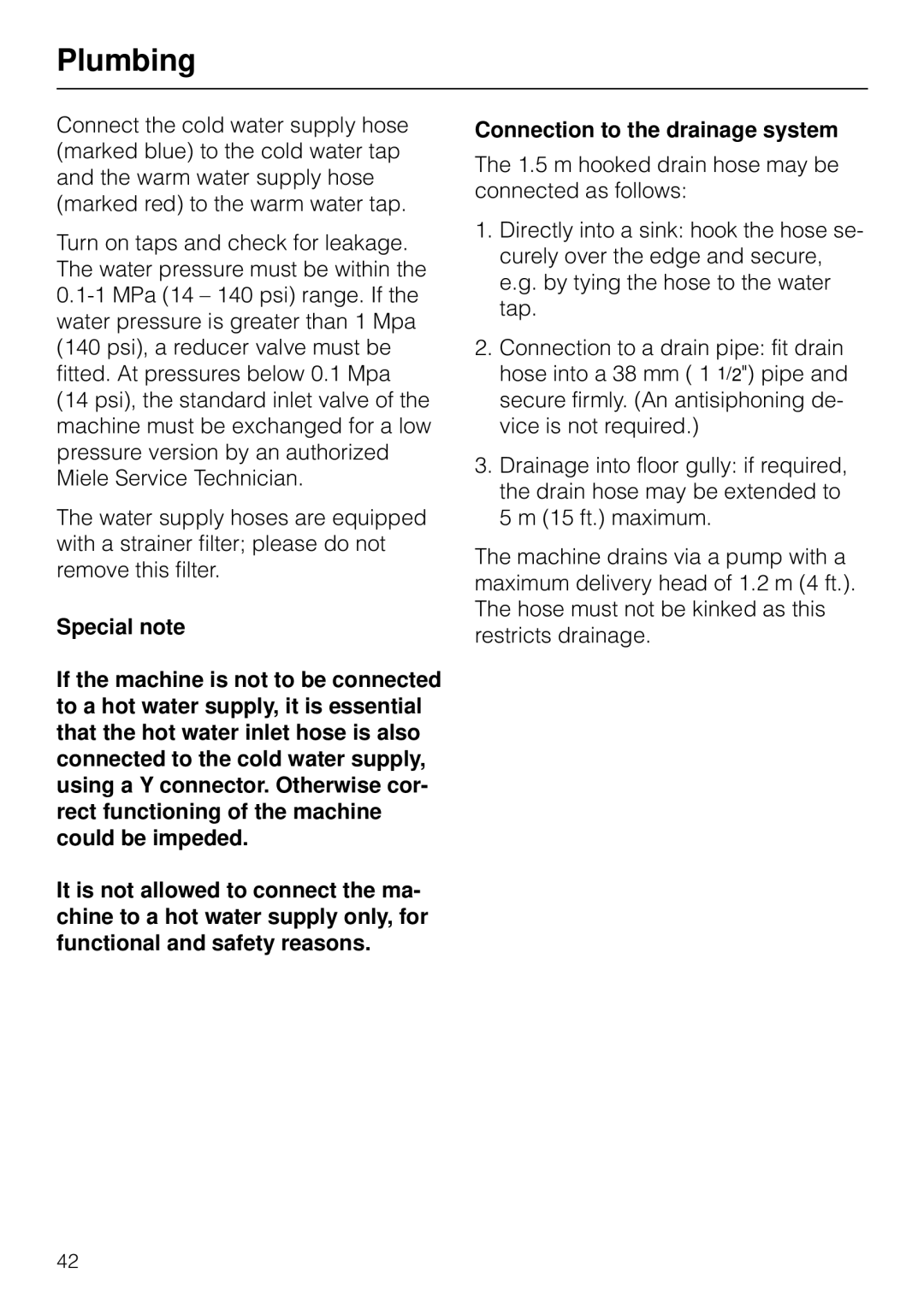W 1918 specifications
The Miele W 1918 washing machine epitomizes the brand's commitment to quality and innovation in laundry technology. Known for its exceptional performance and user-friendly design, the W 1918 is a compelling choice for those seeking both efficiency and versatility in their laundry routine.One of the standout features of the Miele W 1918 is its outstanding washing performance. With a spacious capacity of 8 kg, it efficiently accommodates larger loads, making it perfect for families or individuals with substantial laundry needs. The machine's innovative honeycomb drum design gently treats fabrics while ensuring thorough cleaning, which helps to maintain the integrity of your garments over time.
The W 1918 is equipped with Miele's TwinDos system, an advanced automatic detergent dispensing technology that optimally doses liquid detergent at the right time in the wash cycle. This not only enhances cleaning results but also ensures that you use the precise amount of detergent, minimizing waste and saving money in the long run.
Energy efficiency is another hallmark of the Miele W 1918, earning it an impressive A+++ rating. This means that not only does it deliver excellent performance, but it also helps to reduce the environmental impact and lowers utility bills. The EcoFeedback feature provides real-time information on energy and water consumption, allowing users to make informed choices.
One of the distinctive characteristics of Miele products is their durability. The W 1918 is built to last, with rigorous testing that guarantees longevity even under heavy use. Moreover, it comes with Miele’s patented honeycomb drum, which is engineered to be gentle on textiles while providing optimal washing results.
Other notable technologies include the Quick Wash option, which allows you to tackle lightly soiled laundry in a mere 20 minutes, and the CapDosing feature, which offers specialized capsules for specific fabrics, ensuring that each item receives the tailored care it deserves.
In terms of ease of use, the W 1918 features a clear and intuitive control panel that simplifies operation. Its practical design is complemented by a modern aesthetic, making it an attractive addition to any laundry space.
Overall, the Miele W 1918 represents the pinnacle of washing machine technology, blending performance, efficiency, and user-friendly features. It is a testament to Miele’s ethos of designing products that not only meet but exceed consumer expectations, making laundry tasks not just easier but also more effective.
